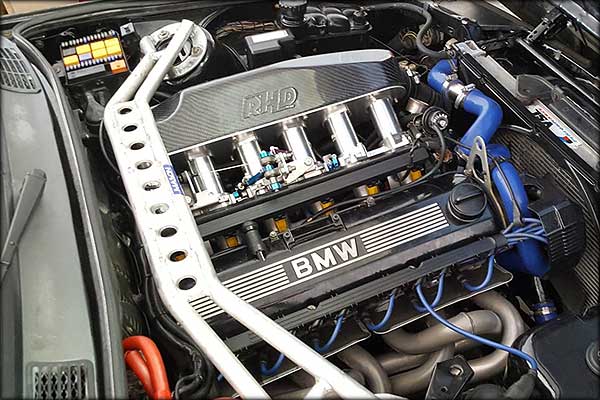Revealing the Intricacies of Next-Generation Power Units: a Deep Study Advanced Engine Technologies and layouts
In the realm of vehicle design, the ruthless quest of sustainability, performance, and performance has actually thrust the evolution of power devices to unprecedented elevations. As we depend on the precipice of a new era in transport, the details of next-generation engine styles bid us to check out the advanced technologies and advancements that promise to redefine the driving experience. From advanced materials that press the boundaries of longevity and weight reduction to innovative turbocharging and turbo charging systems that elevate power output to new degrees, each component of these power devices holds a vital to opening the future of auto engineering. Diving much deeper into the worlds of discharge control, intelligent engine administration systems, and the horizon of power device advancement, we locate ourselves on the cusp of a makeover that promises to improve the landscape of flexibility as we recognize it.
Development of Engine Products

The change in the direction of advanced engine products has actually additionally allowed designers to develop engines with higher power outputs while preserving fuel effectiveness criteria. The usage of lightweight products decreases the overall weight of the engine, leading to improved gas economy and reduced emissions. Furthermore, innovations in products technology have enabled much better thermal administration within engines, leading to enhanced reliability and long life.
Turbocharging and Supercharging Technologies
Exactly How do Turbocharging and Supercharging Technologies revolutionize engine efficiency and performance in contemporary automobiles? Turbo charging and turbocharging are technologies that substantially enhance engine efficiency by increasing the amount of air intake right into the combustion chamber. Turbocharging achieves this by using a turbine driven by exhaust gases to pressurize the intake air, while turbo charging uses a belt- or chain-driven compressor to accomplish the same effect.
These technologies make it possible for smaller sized, much more fuel-efficient engines to produce power equal to larger ones, referred to as downsizing. Forcibly more air right into the cylinders, turbo charging and turbocharging boost combustion efficiency, resulting in increased horse power and torque outcome without a considerable rise in engine size. This brings about much better acceleration, hauling ability, and general driving performance.
Furthermore, supercharging and turbocharging add to boosted gas efficiency by permitting the use of smaller sized engines that consume much less gas under typical driving conditions - bmw engine. This mix of enhanced efficiency and performance has actually made turbocharging and supercharging essential parts of several modern engine designs
Discharge Control and Environmental Influence
With boosting international worries pertaining to air quality and environmental sustainability, the implementation of discharge control modern technologies in vehicles plays an important duty in reducing unsafe pollutants released right into the ambience. Modern vehicles are furnished with innovative emission control systems that assist reduce the environmental effect of vehicle operations. Catalytic converters, for example, are developed to transform harmful gases such as carbon monoxide gas, nitrogen oxides, and hydrocarbons into much less unsafe substances like carbon dioxide and water vapor.
Moreover, advancements in engine modern technology, such as the assimilation of exhaust gas recirculation systems and discerning catalytic decrease, have significantly added to decreasing emissions. These innovations function in tandem to optimize burning efficiency and lessen the launch of harmful toxins right into the air. Additionally, the advancement of crossbreed and electric automobiles represents an important step in the direction of reducing the total ecological impact of the transportation field.
Intelligent Engine Administration Solution

Moreover, these systems make it possible for automobiles to fulfill stringent emissions standards without compromising performance, providing a much more eco-friendly driving experience. The integration of fabricated intelligence and artificial intelligence abilities in engine administration systems remains to push the limits of what is feasible, leading to additional improvements in effectiveness, reliability, and overall lorry efficiency. bmw engine. As automotive innovation advances, smart engine monitoring systems will certainly play a vital function in forming the future of transport towards an extra efficient and sustainable instructions
Future Trends in Power System Growth
As intelligent engine management systems pave the way for enhanced control and optimization in modern-day automobiles, future trends in power device development are poised to redefine the landscape of auto propulsion technologies. These alternative power sources offer enhanced efficiency and performance while lining up with rigorous ecological regulations.
Another considerable trend is the integration of sophisticated products and making strategies. Light-weight materials such as carbon fiber and aluminum are being made use of to minimize click for more total lorry weight, enhancing gas effectiveness and efficiency. Additionally, developments in 3D printing and additive production are allowing the manufacturing of complicated engine elements with higher precision and longevity.
Moreover, artificial knowledge and equipment knowing are playing a vital function in maximizing power device efficiency. These innovations permit real-time tracking and adaptive control, bring about extra reliable and reputable power shipment. Overall, future trends in power device development are tailored towards sustainability, effectiveness, and efficiency, driving the vehicle market towards a new period of propulsion modern technologies.

Conclusion
In conclusion, the advancements in engine products, turbocharging, emission control, and intelligent management systems have actually led the means for next-generation power systems. The complex layouts and technologies in modern engines display the ongoing advancement of automobile modern technology.
Discovering the dynamic improvements Source in engine materials has actually been critical in enhancing the performance and efficiency of modern engines. Over the years, the evolution of engine products has actually played a crucial function in pressing the boundaries of what engines can accomplish.The shift towards progressed engine materials has also enabled designers to create engines with greater power outcomes while maintaining gas effectiveness requirements.The application of intelligent engine monitoring systems in modern automobiles has actually reinvented the means engines are managed and maximized for efficiency and performance. By gathering information in real-time and evaluating it with innovative algorithms, smart engine monitoring systems can adjust to driving designs, environmental variables, and engine health to optimize power outcome while reducing fuel intake and exhausts.